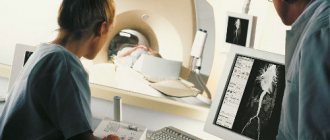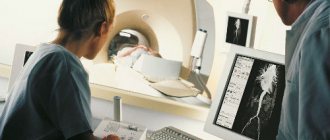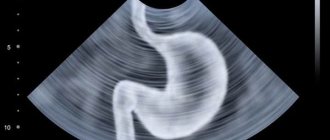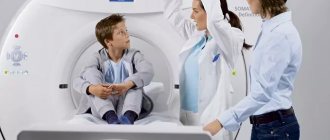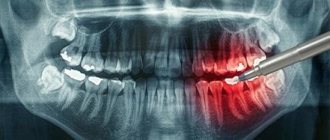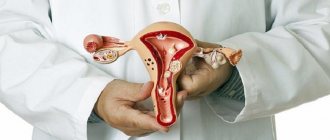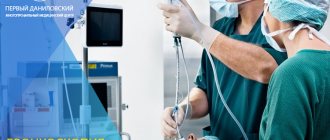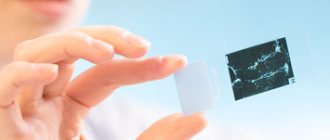STD tests are a separate type of laboratory tests aimed at detecting sexually transmitted infectious diseases (STDs) during clinical diagnostics.
The list of such diseases traditionally includes: HIV (human immunodeficiency virus), genital herpes, gonorrhea, mycoplasmosis, human papillomavirus infection, syphilis, trichomoniasis, ureaplasmosis, chlamydia, cytomegalovirus.
When to get tested
Not all infections present with characteristic symptoms. Many pathologies develop without obvious signs and occur in a latent form. Thus, symptoms appear only at certain stages, resulting in acute and chronic infection.
As a rule, the acute form of the disease occurs during primary infection, which makes it possible to quickly identify the infection based on pronounced symptoms.
The main symptoms indicating the need for laboratory tests:
- rash and redness on the skin in the genital area;
- pain in the groin, as well as in the lower abdomen and genital area;
- white or yellow mucous discharge with an unpleasant odor;
- pain and burning during urination;
- the appearance of pimples, blisters and ulcers.
The listed signs do not necessarily indicate infection with an STD. However, symptoms help to make a timely diagnosis. It is necessary to get tested for STDs if:
- In the treatment of infertility, because sexually transmitted infections are one of the reasons.
- During pregnancy planning, to reduce the risk of miscarriage.
- In a screening study to identify hidden viruses.
- After unprotected sex.
Conditions for proper testing for STDs:
- understanding of major research;
- knowledge of the rules for collecting biological material;
- awareness of research preparation methods.
What infections can be diagnosed using PCR?
The content of the article
A gynecologist, urologist or dermatologist is sent for diagnosis. And PCR analysis
makes it possible to diagnose a large number of different infections. This group also includes hidden, asymptomatic diseases that are in the incubation period:
Using the PCR method
can be found:
- hepatitis C, B;
- ureaplasmosis of the genital organs;
- STIs – ureaplasmosis, trichomoniasis, gardnerellosis;
- chlamydia of the genitals and respiratory tract;
- mycoplasmosis of the genital organs and respiratory tract;
- bacterial vaginosis;
- genital candidiasis;
- Infectious mononucleosis;
- tuberculosis;
- salmonellosis;
- tuberculosis (pulmonary and extrapulmonary forms);
- listeriosis, tick-borne encephalitis, Lyme disease;
- cytomegalovirus, papillomavirus, herpes infection;
- childhood infectious diseases detected during pregnancy and before conception - rubella, mumps, diphtheria, measles;
- HIV.
For each of the above diseases detected by another method, it is advisable to do a PCR test. The causative agents of many infections have several types (strains), and more accurate diagnosis makes treatment more effective. Since different types of pathogens have their own methods of transmitting infection, accurate identification of the pathogen helps protect others from infection. For example, hepatitis A can be contracted through shared objects and utensils (disease of dirty hands), and hepatitis C can only be transmitted through blood, medical instruments and sexual contact. This is important for those who are close to the patient.
Mucosal smear
A swab for testing for STDs is taken from the walls of the vagina, as well as from the urethra, urethra and penis. Next, the biological material is examined under a microscope. During the procedure, the causative agent of the disease is determined and characteristic changes in the material are assessed at the cellular level. A smear for sexually transmitted STDs allows you to determine:
- Trichomonas;
- gonococci;
- ureaplasma;
- chlamydia.
The advantage of this type of research is the high speed of obtaining results. However, the disadvantage of the method is its low reliability compared to other research methods.
In practice, a smear is often used during initial diagnosis. After receiving the result, the doctor prescribes further tests that allow you to accurately determine the type of infection.
How to detect an STI?
To maximize the scope of the examination, it is advisable to donate both blood and a smear for STIs.
Blood test for STIs
Using a blood test for STIs, you can detect infection with chlamydia, gonorrhea, trichomonas, as well as genital herpes, etc. A blood test allows you to determine the presence of dangerous infections such as HIV, hepatitis C, and syphilis.
Smears for STD pathogens
A swab for STIs is taken from the vagina or urethra. With its help, pathogens of gonorrhea, trichomoniasis, etc. are detected. Another method that can be used in conjunction with the above procedures is bacterial culture. It does not detect all types of pathogens, but only those that are capable of growing in an oxygen environment.
However, the method is useful because it helps determine the sensitivity of the microbe to antibiotics for the correct choice of treatment. The sooner you do the necessary tests and detect the pathogen using a smear for STIs, the shorter the duration of treatment will be required, and the greater the chances of a complete recovery without consequences for yourself and others.
Enzyme immunoassay for STDs
An enzyme-linked immunosorbent assay (ELISA) for sexually transmitted STDs is used to detect antibodies and antigens in the blood. They are formed in the patient’s body as a result of infection. This method is characterized by high accuracy, as well as obtaining results in a short time.
However, this research method has a disadvantage - the slow release of antibodies, as well as the inability to determine a specific infection.
Each of the listed diagnostic methods has its own cost and accuracy of results. The doctor prescribes a specific test, taking into account specific symptoms, as well as taking into account the general condition and the presence of suspicions of an STD.
Contraindications and advantages of the method

A smear on the flora in men is a research method that has many advantages:
- non-invasive and simple;
- The collection of material is carried out quickly and in most cases painlessly;
- the analysis results are very informative;
- based on the research data, conclusions are drawn about the functioning of the reproductive and excretory systems;
- various pathologies of the genitourinary system can be diagnosed at an early stage.
- the material is not taken at high temperature or acute inflammatory process of the non-genitourinary area, since the results may be distorted;
- sampling is not carried out in patients who are intoxicated or inappropriate patients with mental disorders;
- bleeding, tumors of the urethra, trauma to the urethra and curvature of the penis are also reasons for refusing the procedure.
You should not refuse to take a scraping from the urethra, since this simple and uncomplicated procedure will provide a lot of information about the man’s health. The analysis should be taken not only if there are complaints, but also during a planned visit to a specialist, since many pathologies and infections occur latently and do not give obvious symptoms, and with the help of this study they are easy to identify and treat in time.
Diagnosis of STDs in women
As a rule, women are prescribed several studies. Most often, doctors resort to PCR and ELISA, since these tests are the most accurate, fast and sensitive to diseases. The pathogen, as well as its type based on its genetic structure, are determined in a complex way. Blood from a vein is used as the main material. To speed up the diagnosis, the doctor prescribes a smear. After collecting the material, it is placed in the necessary environment for further development or examined under a microscope. To determine the type of pathogen, its quantity and stage of disease development, a BAC culture is performed. Mucus from the vagina and urethra is taken as biological material.
How to take a smear from men for infection
Before taking the material, the doctor will ask you to toilet the external genitalia. That is, with the help of water and soap, remove all “excess” microflora from the surface of the head of the penis. After this, the genital organ is wiped with a sterile saline solution and dried with a sterile cloth. Now microorganisms from the surface of the skin will definitely not get into the smear.
A smear is taken from the urethra using a special instrument. It is carefully inserted into the urethra at a distance of several centimeters. Several rotational movements allow you to collect a sufficient amount of material on the probe for research. As some laboratories indicate in the rules for collecting material, movements should be “gentle but intense.”
The probe is carefully removed and the resulting material is applied to a clean glass slide. In this form, the smear will be sent to the laboratory. If the analysis is taken for sexually transmitted infections, then the collected material is placed in a special sterile container with a transport medium.
Before taking a test, many men are concerned about whether it hurts to take a smear from the urethra. During the smear, as the patients themselves say, the sensations are not very pleasant, but tolerable. This largely depends on the qualifications of the doctor, on the instruments used and on how severe the inflammation in the urethra is. Naturally, with urethritis it will be much more painful than with a regular preventive examination, since the mucous membrane is already damaged.
Testing for STDs during pregnancy
Every pregnant woman undergoes many examinations by a gynecologist. She is prescribed a number of various tests, including tests for sexually transmitted infections. These studies are voluntary, however, their significance is quite high. Based on the results obtained, doctors can make a prognosis for the entire pregnancy, as well as prevent the development of infection in the pregnant woman and fetus.
All of the above research methods are safe for women and the fetus and do not cause complications. Testing for STDs helps prevent the following problems:
- early birth;
- miscarriage;
- premature rupture of the membranes;
- frozen pregnancy.
Gynecologists strongly recommend undergoing research at the pregnancy planning stage. Thus, it is possible to carry out therapy before conception, thereby eliminating possible complications during fetal development.
Make an appointment with a urologist and do the necessary tests
To find out what tests are needed in your case, make an appointment with a qualified urologist.
The State Urology Center conducts all the necessary urological examinations, which you can undergo under the compulsory medical insurance policy. All tests can be done on days convenient for you and in the shortest possible time, which will allow you to quickly obtain the results the urologist needs to make a diagnosis. January 20, 2021
Hakobyan Gagik Nersesovich - urologist, oncologist, MD, doctor of the highest category, professor of the Department of Urology of the Federal State Autonomous Educational Institution of Higher Education First Moscow State Medical University named after. THEM. Sechenov
All publications...
Rules for taking tests
Every person periodically needs to be tested for STDs, therefore, it is important to know the main rules for conducting research. Having scheduled a visit to the doctor, you need to have a light dinner the day before, no later than 18:00. 3 days before the tests, you need to exclude fatty foods from your diet. Other factors can also skew the results of STD tests. Necessary:
- do not eat food 12 hours before tests, do not smoke, do not drink alcohol, avoid stress and physical activity;
- If possible, stop taking medications and notify your doctor if it is impossible to interrupt the medication;
- It is better to refuse to donate blood after an X-ray, as well as after other instrumental diagnostic methods.
Before collecting urine for examination, it is necessary to perform a thorough toilet of the genitals. Forbidden:
- Drink too much fluid or less than usual.
- Take antibiotics and uroseptics.
- Have intimacy the day before an STD test.
- Collect urine during menstruation, as well as within 5 days after the end.
To obtain reliable results, it is necessary to collect morning urine, which is collected immediately after sleep. The material must be submitted to the laboratory on the same day. Urine for biochemical analysis is collected per day, and only 15 ml of material is sufficient. Sterile containers must be used.
To successfully take a smear to determine STDs, you must:
1. Conduct research during an exacerbation of symptoms.
2.If unprotected sexual intercourse has taken place, at least 3 weeks must pass before the test.
3.Do not take antibiotics for 3 weeks.
4. Refrain from sexual intercourse 2 days before laboratory tests.
On the day of taking a smear, you cannot perform genital hygiene procedures or use disinfectants. At least 3 hours must pass after urination. It is also necessary to stop taking medications.
It is advisable to take smears and scrapings from women in the first half of the cycle. You can also take material in the second half of the cycle, but no later than 4 days before the start of menstruation. If the symptoms are pronounced, a smear is taken on the day of treatment.
For correct PCR you need to follow the rules:
- men need to refrain from urinating 3 hours before the test, and women - 1.5 hours;
- 2 days in advance it is necessary to exclude sexual intercourse;
- do not douche, and also do not perform vaginal ultrasound, biopsy and colposcopy;
- Eliminate alcohol for 3 days;
- do not take antibiotics for 2 weeks;
- Do not perform intimate hygiene on the day of the test.
If the research results are in doubt, a repeat analysis is done after 2 weeks.
Intimate – 9 tests for men
A comprehensive test for major sexually transmitted infections (STIs), during which the genetic material (DNA) of microorganisms is determined using polymerase chain reaction.
Synonyms Russian
Diagnosis of STIs.
English synonyms
Sexually transmitted diseases (STDs), Real-time polymerase chain reaction (RT-PCR); PCR for STDs.
What biomaterial can be used for research?
Urogenital scraping (PCR).
How to properly prepare for research?
- Do not urinate for 3 hours before taking a urogenital smear.
General information about the study
Sexually transmitted diseases (STDs) are the combined name for several bacterial, viral or protozoal infections (STIs) that can lead to inflammation of various parts of the genitourinary system, including urethritis, cervicitis and prostatitis. STDs have a number of common features:
- The general route of transmission is sexual. From a clinical and epidemiological point of view, this means that one STD is often accompanied by another. For this reason, it is advisable to screen for all STDs at the same time. For the same reason, when diagnosing an STD in a patient, it is recommended to examine all of his sexual partners.
- Similar clinical picture. Despite the fact that STDs have distinctive clinical features, for example, purulent discharge is characteristic of gonorrhea, mucous and foamy discharge is characteristic of trichomoniasis, a characteristic feature of bacterial vaginosis is a sharp “fishy” odor. These clinical features, however, do not allow STDs to be differentiated from each other. The only way to differentiate STDs is through laboratory diagnostic methods.
- STDs are often asymptomatic. Thus, about 50% of patients with chlamydia do not have any signs of infection. For this reason, it is advisable to screen for STDs in all sexually active patients who are not using a barrier method of contraception, and not just in patients with signs of STIs.
Several tests are used to diagnose STDs. Despite the fact that culture on a nutrient medium (culture method) is still considered the “gold standard” for diagnosing STDs, molecular diagnostic methods, namely real-time polymerase chain reaction (RT-PCR), are increasingly used.
RT-PCR is a molecular diagnostic method that allows one to detect fragments of genetic material (DNA) of the infectious agent in biological material. RT-PCR has significant advantages compared to other methods for identifying STIs:
- Higher sensitivity and specificity. Although false-positive and false-negative results are possible with RT-PCR, the accuracy of this method is significantly superior to that of bacteriological culture and other methods. For example, RT-PCR can detect 20-50% more cases of chlamydia than culture. In most cases, the sensitivity of PCR exceeds 90%. This is due to the fact that theoretically only one DNA molecule is enough to carry out the reaction (in practice, 10-1000 copies). This high sensitivity allows the use of biological material with a low concentration of pathogens as a sample for analysis.
- The test result can be obtained in the shortest possible time. Unlike bacteriological culture, which usually takes several days, an RT-PCR study takes only a few hours, and the analysis result is provided within a few days.
Please be aware of the limitations of the RT-PCR method:
- The reaction determines the DNA of both living and destroyed microorganisms. For this reason, RT-PCR is not used to monitor STD treatment. The test result will remain positive for some time, even if the treatment was effective.
- The detection of pathogens such as N. gonorrhoeae, T. vaginalis and C. trachomatis is always a pathological sign that requires the attention of a doctor. On the other hand, a positive RT-PCR result for so-called opportunistic microorganisms (Culture for Mycoplasma hominis and Ureaplasma urealyticum) in the absence of signs of cervicitis, urethritis and other clinical forms of STDs does not always allow us to confirm the presence of a clinically significant infection. The result of the analysis should be assessed taking into account additional clinical, laboratory and instrumental data.
- The accuracy of RT-PCR, although to a lesser extent than other tests, still depends on the use of antibiotics. The use of cephalosporins (ceftriaxone), doxycycline, macrolides (azithromycin, erythromycin) can lead to a false negative result.
This comprehensive analysis does not include a test for HIV infection (the screening test for HIV is ELISA, not PCR), syphilis and viral hepatitis (the screening test for these infections is serological tests, not PCR). This analysis includes a test for Gardnerella vaginalis (the cause of bacterial vaginosis), a bacterium that does not belong to the group of STIs, but is considered together with STIs for diagnostic purposes.
What is the research used for?
- For the diagnosis of sexually transmitted diseases (STDs, STIs).
When is the study scheduled?
- During a preventive examination of sexually active patients who do not use a barrier method of contraception;
- if you suspect urethritis, cervicitis, prostatitis and other inflammatory diseases of the genitourinary system;
- when diagnosing an STD in a patient’s sexual partner.
What do the results mean?
Reference values: negative. Positive result:
- one or more sexually transmitted infections (STIs).
Note: Gardnerella vaginalis, culture for Mycoplasma hominis and Ureaplasma urealyticum may be considered "opportunistic pathogens". Detection of these microorganisms using RT-PCR does not always indicate a clinically significant infection.
Negative result:
- norm.
What can influence the result?
- The presence of hemoglobin, bile acids, human chorionic gonadotropin (pregnancy), nitrites and some inorganic salts in the sample interferes with the reaction.
Important Notes
- To obtain the most accurate result, you must follow the test preparation guidelines.
Also recommended
[40-042] Intimate - optimal - smear test for women
[40-043] Intimate - optimal - smear test for men
[40-118] Intimate - plus - smear test in women
[40-119] Intimate - maximum - smear analysis in women
[40-130] Intimate - plus - for men
[07-032] HIV 1.2 Ag/Ab Combo (determination of antibodies to HIV types 1 and 2 and p24 antigen)
[07-049] Treponema pallidum, antibodies, hypersensitive Who orders the test?
Dermatovenerologist, urologist, gynecologist, general practitioner.
Literature
- Kim SJ, Lee DS, Lee SJ. The prevalence and clinical significance of urethritis and cervicitis in asymptomatic people by use of multiplex polymerase chain reaction. Korean J Urol. 2011 Oct;52(10):703-8.
- Dong Q, Nelson DE, Toh E, Diao L, Gao X, Fortenberry JD, Van der Pol B. The microbial communities in male first catch urine are highly similar to those in paired urethral swab specimens. PLoS One. 2011;6(5):e19709.
- Centers for Disease Control and Prevention. Recommendations for the laboratory-based detection of Chlamydia trachomatis and Neisseria gonorrhoeae—2014. MMWR Recomm Rep. 2014 Mar 14;63(RR-02):1-19.
Rules for women
Main recommendations for women:
- do not urinate for 3 hours before donating biological material;
- abstain from intimacy for 1.5 days;
- do not use contraceptive ointments and suppositories;
- do not use antibacterial soap during genital hygiene;
- refrain from using antiseptics and douching;
- do not submit material during menstruation;
- Avoid taking antibacterial medications, as they may distort test results.
Range of polymerase chain reaction capabilities
The PCR method is a study with virtually unlimited diagnostic capabilities in the field of infectious diseases.
List of infections determined by urine analysis:
- mycoplasmosis;
- herpes type 5, or cytomegalovirus;
- chlamydia;
- trichomoniasis;
- gonorrhea;
- ureaplasmosis (with identification of three types of ureaplasma bacteria);
- herpes type 2, or genital herpes;
- candidiasis (with differentiation of five types of fungi);
- syphilis;
- herpes type 4, or Epstein-Barr virus;
- gardnerellosis;
- papillomavirus infection (determination of 21 strains of the HPV virus).
In addition to sexually transmitted infections, the molecular diagnostic method identifies pathogenic bacteria of streptococcus, Klebsiella, Koch's bacillus, opportunistic bacteria of staphylococcus, and E. coli.
Advantages of PCR diagnostics
In gynecology, venereology, and urology, the PCR method replaces several studies or is used in combination with the following:
- Serological tests - detection of specific immunoglobulins to an antigen (infectious agent).
- Bacteriological seeding is the cultivation of colonies of bacteria (viruses) on nutrient media.
- Conventional and fluorescent microscopy is the study of biomaterial under a microscope (fluorescent microscope).
The uniqueness of the polymerase chain reaction is its ability to detect active and inactive pathogenic microorganisms (those killed by drugs).
